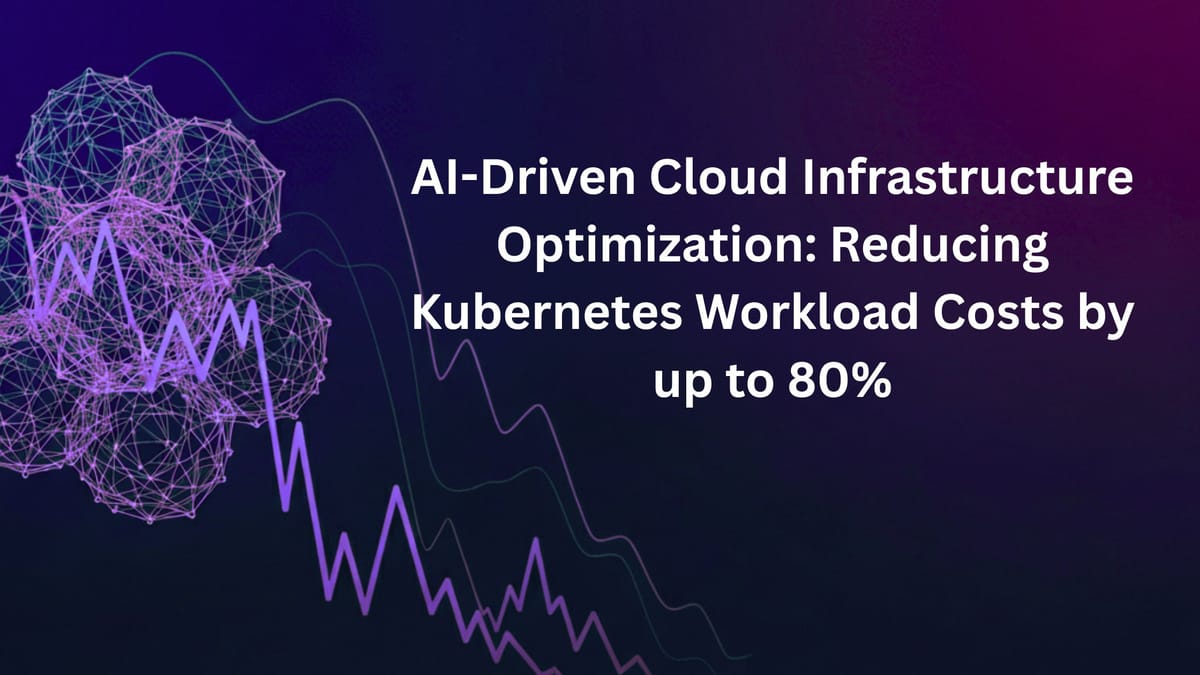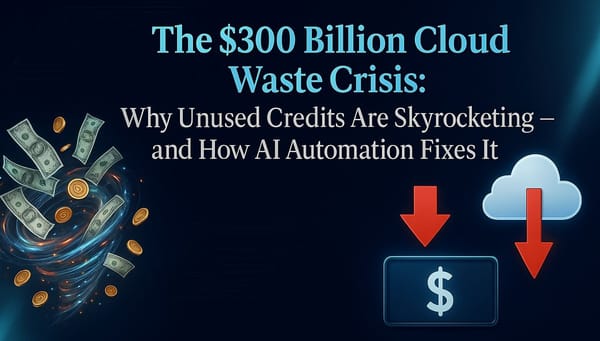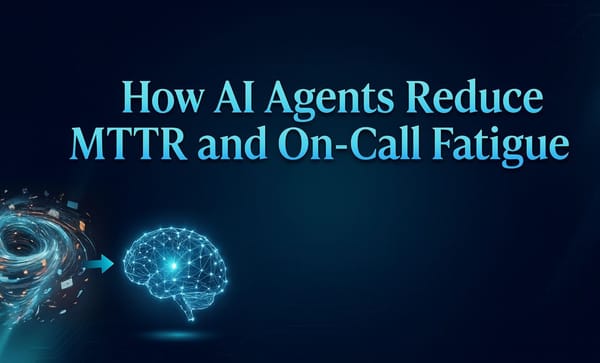AI-Driven Cloud Infrastructure Optimization: Reducing Kubernetes Workload Costs by up to 80%

Introduction: The Growing Challenge of Managing Kubernetes Costs
Kubernetes has become the de facto standard for container orchestration, empowering organizations to build, deploy, and scale applications with unprecedented agility. However, this flexibility comes at a cost. As cloud-native environments grow in complexity, managing the underlying infrastructure costs has become a top priority for businesses of all sizes. According to the 2025 State of FinOps Report, a staggering 78% of organizations report that cloud cost variances are detected too late, leading to significant budget overruns. Furthermore, a recent survey by CloudZero revealed that 67% of CIOs consider cloud cost optimization a top IT priority in 2025.
The dynamic nature of Kubernetes, with its constantly shifting workloads and resource demands, makes it notoriously difficult to manage costs effectively. Traditional approaches to infrastructure management, which often rely on manual intervention and reactive scaling, are no longer sufficient. This has led to a new set of challenges, including:
- Overprovisioned Resources: Fear of performance degradation often leads to allocating more resources than necessary, resulting in significant waste.
- Idle Nodes and Poor Autoscaling: Inefficient autoscaling strategies can leave expensive compute nodes sitting idle, driving up costs without delivering any value.
- Orphaned Resources: Unused storage volumes, load balancers, and other resources can accumulate over time, creating a "graveyard" of hidden costs.
- Inefficient Storage and Networking: Suboptimal storage configurations and network policies can lead to unnecessary data transfer fees and performance bottlenecks.
These challenges highlight the urgent need for a more intelligent, automated approach to Kubernetes cost management. This is where AI-driven cloud infrastructure optimization comes in. By leveraging the power of artificial intelligence and machine learning, organizations can move beyond reactive, manual processes and embrace a proactive, automated approach to resource management. This not only helps to control costs but also improves performance, enhances reliability, and frees up valuable engineering resources to focus on innovation.
In this article, we will explore the concept of AI-driven cloud infrastructure optimization in depth. We will discuss why it is so important in today's cloud-native landscape, compare it to traditional approaches, and outline the key benefits it offers. We will also provide a step-by-step guide to implementing AI-driven optimization and showcase how Stackbooster's AI-powered platform can help you reduce your Kubernetes workload costs by up to 80%.
What is AI-Driven Cloud Infrastructure Optimization?
AI-driven cloud infrastructure optimization is a modern approach to managing cloud resources that leverages artificial intelligence and machine learning to automate and optimize the allocation, scaling, and management of infrastructure resources in real-time. Unlike traditional methods that rely on manual configurations and reactive adjustments, AI-driven optimization uses predictive analytics and intelligent automation to proactively manage resources based on the specific needs of the application.
The core components of AI-driven cloud infrastructure optimization include:
- Predictive Scaling: Using machine learning models to forecast future resource demands and automatically scale resources up or down in anticipation of changing workloads.
- Dynamic Resource Allocation: Continuously analyzing the resource utilization of individual pods and containers and dynamically adjusting resource allocations to ensure optimal performance without overprovisioning.
- Intelligent Instance Selection: Automatically selecting the most cost-effective cloud instances based on real-time pricing, performance requirements, and availability.
- Automated Anomaly Detection: Proactively identifying and flagging unusual patterns in resource consumption that may indicate performance issues or potential cost overruns.
- Continuous Defragmentation: Optimizing the placement of pods across nodes to reduce resource fragmentation and improve overall cluster efficiency.
By combining these capabilities, AI-driven optimization platforms can create a self-healing, self-optimizing infrastructure that continuously adapts to the changing needs of the application, ensuring that resources are always aligned with demand. This not only helps to reduce costs but also improves performance, enhances reliability, and frees up DevOps teams to focus on more strategic initiatives.
Why is Cost Optimization Important?
In today's competitive business landscape, cost optimization is no longer just a financial exercise; it's a strategic imperative. For organizations that have embraced the cloud, effective cost management is essential for maximizing return on investment (ROI), driving innovation, and achieving long-term scalability. The impact of poor cost management can be far-reaching, affecting everything from budget allocation and resource planning to a company's ability to compete in the market.
Here are some of the key reasons why cost optimization is so important:
- Budgetary Control and Predictability: Uncontrolled cloud spending can quickly spiral out of control, leading to budget overruns and financial instability. By implementing a robust cost optimization strategy, organizations can gain greater control over their cloud spending and achieve more predictable financial outcomes.
- Improved ROI and Profitability: Every dollar saved on cloud infrastructure is a dollar that can be reinvested in other areas of the business, such as product development, marketing, or customer support. By optimizing cloud costs, organizations can improve their ROI and increase profitability.
- Enhanced Scalability and Agility: A cost-optimized infrastructure is a more efficient infrastructure. By right-sizing resources and eliminating waste, organizations can improve their ability to scale their applications and respond to changing market demands with greater agility.
- Increased Innovation and Competitiveness: When DevOps teams are bogged down with manual, reactive tasks, they have less time to focus on innovation. By automating infrastructure management and optimizing costs, organizations can free up their engineering talent to focus on building new features and creating a competitive advantage.
- Sustainable Growth: As a business grows, its cloud infrastructure needs will also grow. By implementing a scalable and cost-effective infrastructure from the outset, organizations can ensure that their growth is sustainable and that they are not held back by rising infrastructure costs.
In short, cost optimization is not just about saving money; it's about building a more efficient, agile, and innovative business. By embracing a strategic approach to cost management, organizations can unlock the full potential of the cloud and position themselves for long-term success.
Manual vs. AI-Driven Optimization (Comparison Table)
| Feature/Aspect | Manual Optimization | AI-Driven Optimization |
|---|---|---|
| Resource Scaling | Reactive, based on predefined thresholds | Proactive, based on predictive analytics |
| Resource Allocation | Static, based on initial estimates | Dynamic, based on real-time utilization |
| Instance Selection | Manual, based on static pricing | Automated, based on real-time pricing and performance |
| Anomaly Detection | Manual, based on monitoring alerts | Automated, based on machine learning models |
| Defragmentation | Manual, requires significant effort | Continuous, automated process |
| Operational Overhead | High, requires dedicated staff | Low, fully automated |
| Cost Savings | Limited, often leads to overprovisioning | Significant, can reduce costs by up to 80% |
| Performance | Inconsistent, prone to bottlenecks | Optimal, resources are always aligned with demand |
| Reliability | Prone to human error | High, self-healing and self-optimizing |
| Time to Value | Slow, requires significant upfront investment | Fast, can be implemented in minutes |
Benefits of AI-Driven Optimization
Adopting an AI-driven approach to cloud infrastructure optimization offers a wide range of benefits that go far beyond simple cost savings. By automating and optimizing resource management, organizations can unlock new levels of efficiency, reliability, and innovation. Here are some of the key benefits of AI-driven optimization:
- Drastic Cost Reduction: This is the most immediate and tangible benefit. By eliminating overprovisioning, leveraging spot instances, and optimizing resource utilization, AI-driven platforms can reduce Kubernetes workload costs by up to 80%.
- Improved Performance and Reliability: By ensuring that applications always have the right resources at the right time, AI-driven optimization can significantly improve performance and reliability. Predictive scaling and automated anomaly detection help to prevent performance bottlenecks and minimize downtime.
- Increased Developer Productivity: When developers are no longer burdened with manual infrastructure management tasks, they can focus on what they do best: writing code and building innovative new features. This leads to increased productivity, faster time-to-market, and a more engaged and motivated engineering team.
- Enhanced Security and Compliance: AI-driven platforms can help to improve security and compliance by providing greater visibility into resource utilization and ensuring that all resources are properly configured and secured. Automated anomaly detection can also help to identify and mitigate potential security threats.
- Greater Business Agility: In today's fast-paced digital world, business agility is essential for success. By automating and optimizing infrastructure management, organizations can respond to changing market demands with greater speed and agility, giving them a significant competitive advantage.
- Data-Driven Decision Making: AI-driven optimization platforms provide a wealth of data and insights that can be used to make more informed decisions about resource allocation, capacity planning, and future infrastructure investments.
Implementing AI-Driven Optimization
Implementing an AI-driven optimization strategy may seem like a daunting task, but with the right approach and the right tools, it can be a relatively straightforward process. Here is a step-by-step guide to getting started:
- Assess Your Current Environment: The first step is to gain a clear understanding of your current cloud infrastructure and identify areas for improvement. This includes analyzing your current resource utilization, identifying any overprovisioned or idle resources, and understanding your current cost structure.
- Define Your Goals and Objectives: Once you have a clear understanding of your current environment, you can begin to define your goals and objectives for optimization. This may include specific cost reduction targets, performance improvement goals, or other key performance indicators (KPIs).
- Choose the Right Tools: There are a number of tools available that can help you to implement an AI-driven optimization strategy. When evaluating tools, it is important to look for a solution that is easy to use, provides a high degree of automation, and offers a comprehensive set of features.
- Start Small and Iterate: It is often best to start with a small pilot project to test the waters and gain experience with the new tools and processes. Once you have achieved success with the pilot project, you can begin to roll out the new strategy to the rest of your organization.
- Monitor and Measure Your Results: It is important to continuously monitor and measure your results to ensure that you are achieving your goals and to identify any areas for further improvement. This includes tracking your key metrics, such as cost savings, performance improvements, and developer productivity.
How to Implement with Stackbooster
Stackbooster makes it easy to implement an AI-driven optimization strategy for your Kubernetes workloads. Our platform provides a comprehensive set of tools and features that automate the entire process, from resource allocation and scaling to instance selection and anomaly detection. Here's how Stackbooster can help you to reduce your Kubernetes workload costs by up to 80%:
- Zero-Maintenance Kubernetes Setup: With Stackbooster, you can achieve a fully operational Kubernetes cluster with just a few clicks. Our platform automates the entire setup process, so you can get up and running in minutes without any ongoing maintenance.
- Proactive Node and Pod Scaling: As the first Node and Pod autoscaler, Stackbooster actively adds and removes right-sized workers to optimize cluster efficiency, going beyond simply addressing pending pods.
- Dynamic Pod Right-Sizing: Our platform right-sizes pods in real-time, ensuring they receive resources precisely when needed, which prevents over-provisioning and conserves resources.
- AI-Driven Spot Instance Handling: Our AI algorithm offers zero-downtime technology for spot instances, ensuring high availability and resilience, minimizing disruptions.
- Cost-Efficient Worker Selection: By choosing the best price-driven workers instead of just the smallest, Stackbooster enhances cost efficiency.
To get started with Stackbooster, simply sign up for a free trial and connect your Kubernetes cluster. Our platform will automatically begin to analyze your environment and provide you with a set of recommendations for optimization. You can then choose to implement these recommendations with a single click, or you can set up automated policies to continuously optimize your environment in real-time.
Technology and Infrastructure
The power of Stackbooster's AI-driven optimization platform lies in its sophisticated technology and infrastructure. Our platform is built on a foundation of cutting-edge AI and machine learning technologies that have been specifically designed to meet the unique challenges of managing Kubernetes environments. Here are some of the key technologies that power our platform:
- Predictive Analytics Engine: Our platform uses a proprietary predictive analytics engine to forecast future resource demands with a high degree of accuracy. This allows us to proactively scale resources up or down in anticipation of changing workloads, ensuring that your applications always have the resources they need to perform optimally.
- Machine Learning-Based Anomaly Detection: We use a variety of machine learning models to continuously monitor your environment and detect any unusual patterns in resource consumption. This allows us to proactively identify and mitigate potential performance issues and security threats before they can impact your business.
- Reinforcement Learning for Instance Selection: Our platform uses reinforcement learning to continuously learn and adapt to the changing cloud market. This allows us to automatically select the most cost-effective cloud instances based on real-time pricing, performance requirements, and availability.
- Distributed Architecture for Scalability and Reliability: Our platform is built on a distributed architecture that is designed for scalability and reliability. This ensures that our platform can handle even the most demanding workloads and that your applications are always available when you need them.
Conclusion: Embrace the Future of Cloud Infrastructure Management
As cloud-native technologies continue to evolve, the need for a more intelligent, automated approach to infrastructure management has never been greater. AI-driven cloud infrastructure optimization represents a paradigm shift in how we manage cloud resources, moving us from a reactive, manual world to a proactive, automated one.
By embracing this new approach, organizations can not only reduce their cloud costs by up to 80% but also improve performance, enhance reliability, and free up their valuable engineering resources to focus on what matters most: innovation.
Stackbooster is at the forefront of this revolution, providing a powerful yet easy-to-use platform that automates the entire process of Kubernetes cost optimization. With our AI-powered platform, you can achieve a self-healing, self-optimizing infrastructure that continuously adapts to the changing needs of your business.
Ready to take control of your cloud spending and unlock the full potential of your Kubernetes environment?
Frequently Asked Questions (FAQs)
1. Is Kubernetes not free? Why does it have costs?
While Kubernetes itself is open-source and free to use, the underlying infrastructure it runs on is not. The costs associated with Kubernetes come from the cloud resources it consumes, such as:
- Compute Instances: The virtual machines (e.g., AWS EC2, Google Compute Engine) that run your Kubernetes nodes.
- Storage: The persistent volumes and block storage used by your applications.
- Networking: The load balancers, ingress controllers, and data transfer fees.
- Managed Services: Any additional cloud services you use, such as databases, monitoring tools, or logging services.
AI-driven optimization focuses on reducing the costs of these underlying resources, not Kubernetes itself.
2. How does AI-driven optimization differ from traditional autoscaling?
Traditional autoscaling, such as the Kubernetes Horizontal Pod Autoscaler (HPA), is reactive. It scales the number of pods up or down based on observed metrics like CPU utilization. AI-driven optimization, on the other hand, is proactive. It uses predictive analytics to forecast future demand and scales resources in anticipation of changing workloads. It also goes beyond simple pod scaling to optimize the entire infrastructure, including node selection, instance sizing, and defragmentation.
3. What kind of cost savings can I realistically expect?
While results can vary depending on your specific environment and workload, it is not uncommon to see cost savings of up to 80% with AI-driven optimization. These savings are achieved through a combination of factors, including:
- Eliminating overprovisioning: By right-sizing resources and scaling them dynamically, you can eliminate waste and reduce costs.
- Leveraging spot instances: AI-driven platforms can safely and effectively use spot instances to reduce compute costs by up to 90%.
- Optimizing instance selection: By automatically selecting the most cost-effective instances for your workload, you can further reduce costs.
4. Is AI-driven optimization difficult to implement?
Not at all. Modern AI-driven optimization platforms like Stackbooster are designed to be easy to use and implement. With just a few clicks, you can connect your Kubernetes cluster and start seeing results in minutes. The platform automates the entire process, so you don't need to be an expert in AI or machine learning to get started.
5. How does AI-driven optimization improve performance?
By ensuring that your applications always have the right resources at the right time, AI-driven optimization can significantly improve performance. Predictive scaling helps to prevent performance bottlenecks by scaling resources in anticipation of changing workloads. Dynamic resource allocation ensures that your applications are never starved for resources, and automated anomaly detection helps to identify and mitigate potential performance issues before they can impact your users.
6. Can I use AI-driven optimization with my existing tools?
Yes. Most AI-driven optimization platforms are designed to integrate seamlessly with your existing tools and workflows. They can be used in conjunction with your existing monitoring, logging, and CI/CD tools to provide a comprehensive solution for managing your Kubernetes environment.
7. What is the difference between cost optimization and FinOps?
FinOps is a cultural practice that brings together finance, engineering, and business teams to manage cloud costs. Cost optimization is a key component of FinOps, but it is not the only one. FinOps also includes other practices, such as budgeting, forecasting, and showback/chargeback. AI-driven optimization can be a powerful tool for implementing a FinOps practice, as it provides the data and automation needed to effectively manage cloud costs.





